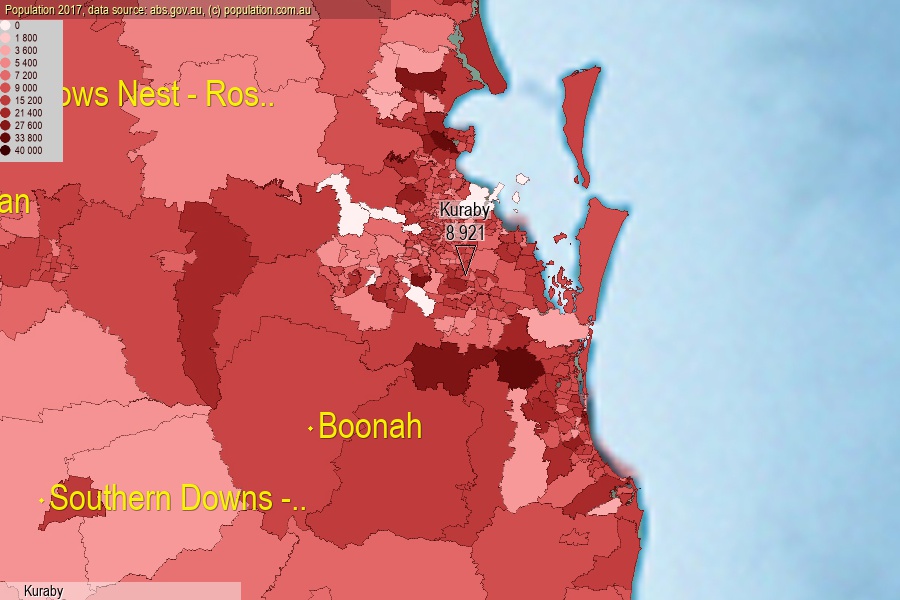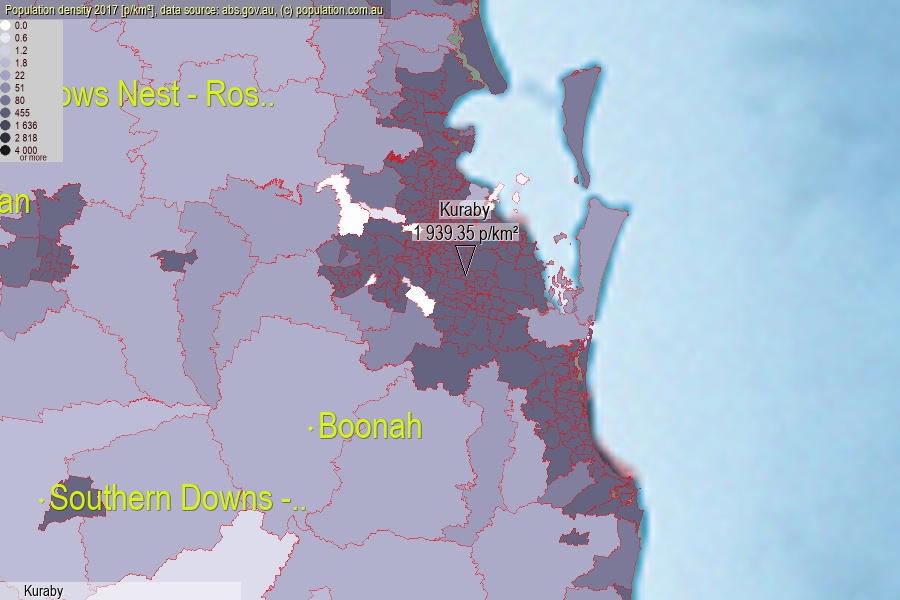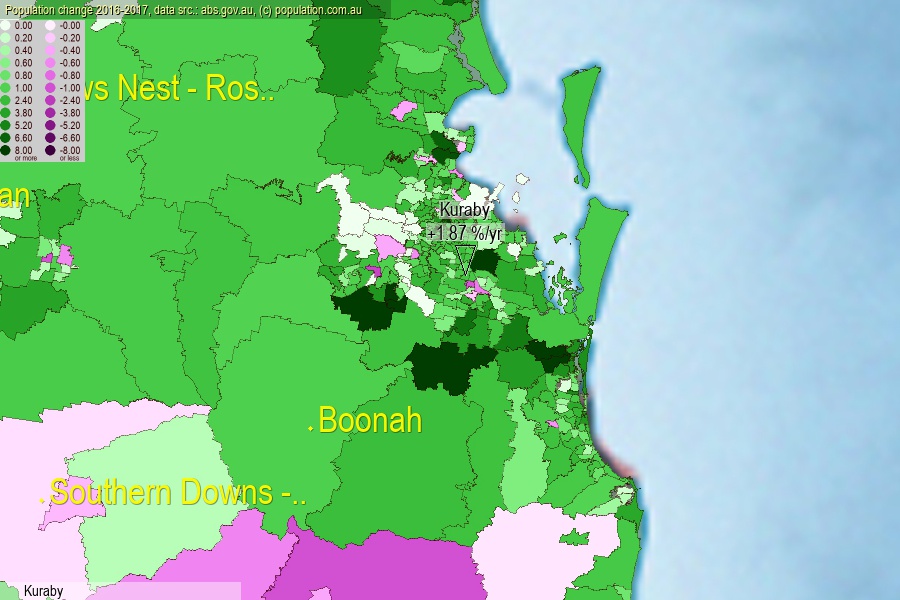 population.com.au
population.com.auLast official estimated population of Kuraby (as Statistical Area Level 2) was 8 921 people (on 2017-06-30)[2]. This was 0.04% of total Australian population and 0.179% of QLD population. Area of Kuraby is 4.60 km², in this year population density was 1 939.35 p/km² . If population growth rate would be same as in period 2016-2017 (+1.87%/yr), Kuraby population in 2025 would be 10 349. [0]



Click to enlarge. Kuraby is located in the center of the images.
Population [people], population density [p./km²] and population change [%/year] [2]
View borders » (new window) [4]
[1991-1992] +6.22 %/Yr.
[1992-1993] +8.78 %/Yr.
[1993-1994] +20.92 %/Yr.
[1994-1995] +7.75 %/Yr.
[1995-1996] +12.72 %/Yr.
[1996-1997] +24.05 %/Yr.
[1997-1998] +19.58 %/Yr.
[1998-1999] +29.28 %/Yr.
[1999-2000] +24.78 %/Yr.
[2000-2001] +17.07 %/Yr.
[2001-2002] +14.16 %/Yr.
[2002-2003] +11.03 %/Yr.
[2003-2004] +9.10 %/Yr.
[2004-2005] +3.68 %/Yr.
[2005-2006] +2.55 %/Yr.
[2006-2007] +4.84 %/Yr.
[2007-2008] +4.33 %/Yr.
[2008-2009] +2.55 %/Yr.
[2009-2010] +1.65 %/Yr.
[2010-2011] +1.66 %/Yr.
[2011-2012] +1.63 %/Yr.
[2012-2013] +1.94 %/Yr.
[2013-2014] +1.73 %/Yr.
[2014-2015] +2.08 %/Yr.
[2015-2016] +0.77 %/Yr.
[2016-2017] +1.87 %/Yr.
[0] Calculated with linear interpolation from officially estimated population
[1] Read more about SA2 and Australian Statistical Geography Standard (ASGS) on abs.gov.au
[2] Population data from Australian Bureau of Statistics (Population and density: 2017; change: 2016-2017)
[3] Digital Boundaries: Australian Statistical Geography Standard (ASGS) 2016.
[4] Border coordinates are simplifyed using Ramer-Douglas-Peucker algorithm.